
views
Cutting the Jamb Pieces
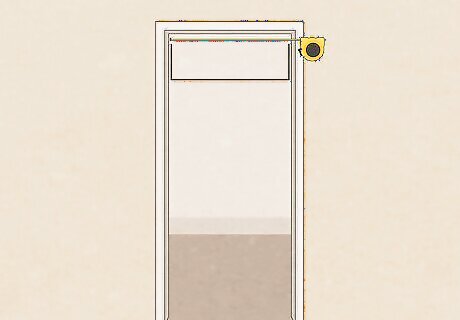
Measure the width of the door frame. You'll need to know how wide your door frame is so the jamb fits in it. Hold a tape measure up to the top of the door frame. Note the measurement and save it for later. Keep in mind that if the door has 2x4 walls, then the frame will be 4-1/2" (11.4 cm). If the door has 2x6 walls, then the frame will always be 6-1/2" (16.5 cm). While many people use “door jamb” and “door frame” interchangeably, a door jamb refers to the 3 boards the door is directly mounted onto.
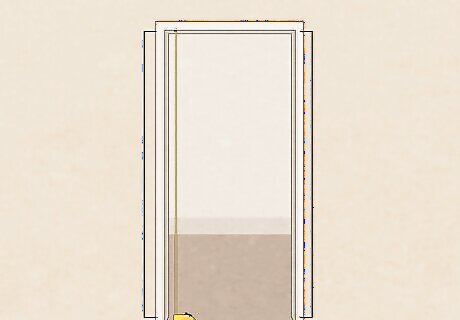
Measure the sides of the door frame. Take your tape measure to one side of the door frame. Note the length and mark this on one piece of wood. If you have level ground, this measurement will be the same for the other side. Most likely they'll be different, so measure the other side of the frame and mark its length on another piece of wood. Don't forget to also measure the top part of the frame for the smaller piece of wood. When measuring the height of the door frame, add about ⅝” (1.58 cm) to the height of the jamb, or slightly more if you have a thick floor material like carpet. To keep track of which piece of wood goes on either side, label them as “hinge jamb” and “latch jamb.” The hinge jamb is the side where your door hinges will go, and the latch jamb is the opposite side. This is especially helpful if the jambs are different lengths.
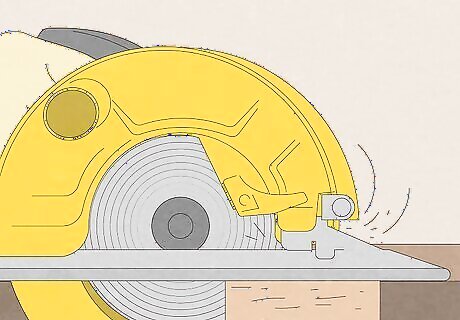
Cut the wood. Suit up with safety gear, including gloves, safety glasses, and a visor, before turning on your circular saw. Cut the wood down to size by sawing into the marks you made earlier. If you measured correctly, the wood should now be correct length to fit within the door frame. If the board is too thick and extends past the frame, use the saw to shave it down until it’s the proper shape.
Creating and Installing the Jamb
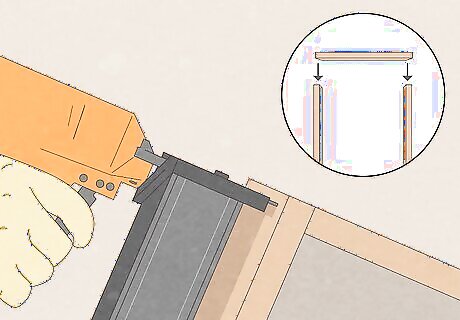
Glue and nail the wood together. Lay one of the longer pieces of wood on its side and add a bit of wood glue to the end. Attach the shorter piece to one end of the longer piece. Using wood glue keeps the wood in the proper position until you secure them with nails. Then, get your nail gun and hold it square on the outside of the area where the wood meets. Add the nails to secure the pieces together. Align the other piece of wood on the opposite side and attach it the same way.
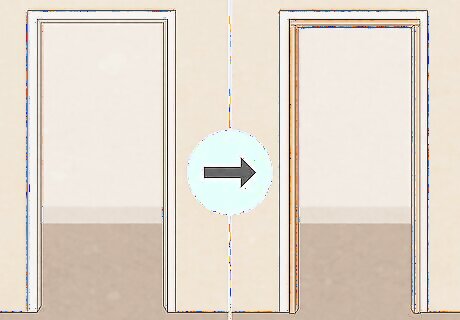
Hold the jamb up to the door frame. Carefully move your newly-cut wood up into the frame. Since you measured the pieces, it should fit securely without large gaps. Align the left side against the wall and see if it appears level. Double-check this with a level.
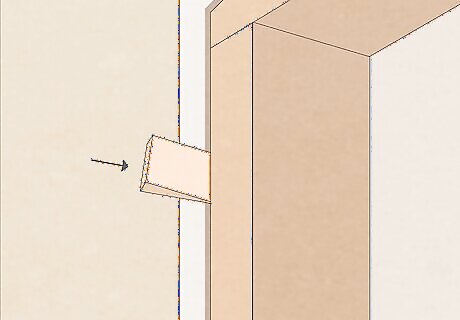
Level out the jamb with wood strips. After comparing the jamb to the frame, place wood strips (shims) under the jamb if it needs leveling. Make sure that you do not lift the jamb too much, and determine where you need to place the shims to level the hinge side from top to bottom. Slip them between the jamb and frame as needed. Home improvement specialist Ryan Tuttle says to always start with the side where the door will attach to the hinges: “Find your hinge side first and locate which way the door is going to swing. Is it going to swing inside-outside, right side-left? Then center the door frame in the rough opening and shim it into place.” Make sure to fasten the hinge side jambs directly to the stud. You can fasten them loosely in case you need to slide a jamb behind it, but it is best to keep it tight. Find wood shims at your local home improvement store.
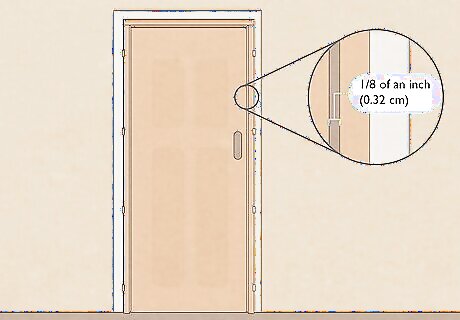
Hold the door against the jamb to check for clearance. Hold the jamb in place by lightly hammering in a few nails. Place the door inside the jamb and ensure it fits comfortably. The gap between the door and jamb should be 1/8 of an inch (.32 cm) on all sides. Add or remove shimming so the door fits. When you're sure the measurements are correct, remove the door.
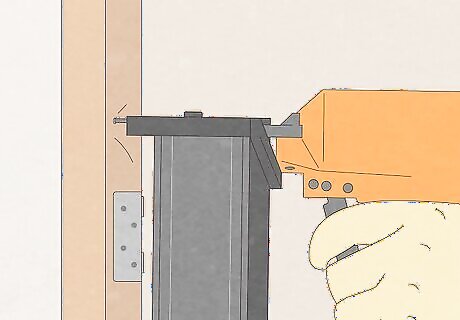
Nail the hinge side of the jamb to the frame. Get your nail gun again. Make sure the jamb is even against the wall and frame and secure it with nails from top to bottom. Be sure to put a nail through each shim to hold them in place. Weather strips are a good way of hiding screw marks. Screws make exterior doors stronger and more adjustable. Drill a hole in the jamb before adding the screws, then attach the weather strips over them.
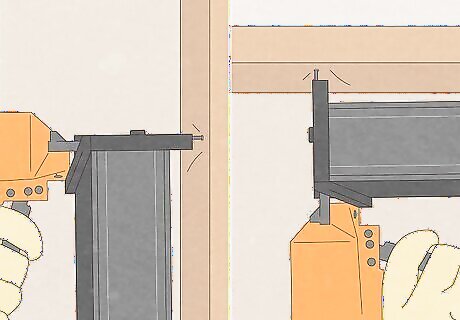
Secure the other sides of the jamb to the frame. Move onto the top side. First, hold your level up to the jamb. If it doesn't appear level, add some shims to even it out. Finish by nailing the jamb to the frame. Repeat this with the side opposite the hinges.
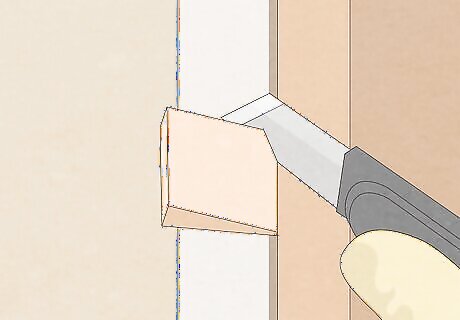
Cut the shims to size with a utility knife. The shims will have their ends sticking out of the jamb. Use your utility knife or other woodcarving knife to score them, then use a hammer to break off the ends.
Installing Door Stops
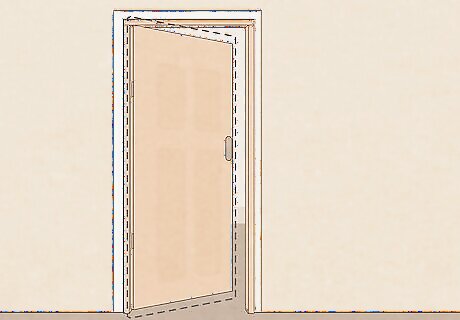
Hang the door in the jamb. Screw the hinges onto the correct side of the jamb. Unless you are installing a prehung door, trace the outline of the hinges on the jamb and cut an indentation using a router or utility knife. Place the door in the jamb and fasten it to the hinges. Make sure it's tight and opening in the right direction. It's ideal to do this first so you can gauge how much space you have for the door stops and align them properly behind the hinges.
Measure out the stopper width. Buy a pre-cut door stopper (also called stop molding) or fashion your own out of wood strips. Measure how wide the stopper needs to be so that the pieces on each side of the door frame fit together. The molding goes behind the hinges and rests in the middle of the jamb. Measure it against the jamb until you're sure it's the right thickness. The stop molding is thin. When cutting it yourself, the wood strips only need to be about 1 or 2 inches (2 to 5 cm) wide.
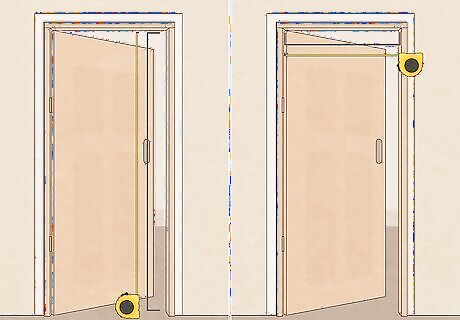
Measure the stopper's length on the door jamb. Start with the top part and measure all the way across the jamb so that the stopper extends across it. Then, measure the amount of wood needed from top to bottom of both the left and right sides of the jamb.
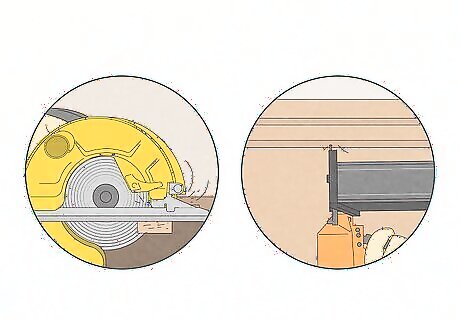
Cut the stopper to size and nail it to the door frame. Use a saw to trim the wood to the required length. You'll have a shorter piece for the top of the door and 2 longer pieces for the sides. Then, get your nail gun one more time and start with the top side. Keep the stopper pieces even and centered in the jamb. Nail the shorter piece to the frame, then nail the other pieces to the sides. When you're done, the closed door should rest inside the jamb.




















Comments
0 comment